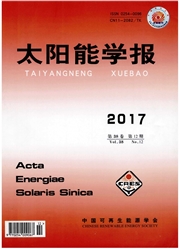

 中文摘要:
中文摘要:
以氯化醇钛盐表面反应法制备系列TiO2/SiO2,根据化学分析、XRD、Raman、XPS和DRS表征分析,载体表面具有分子级分散的锐钛矿型TiO2微晶粒子和非晶TiOx物种。与本体TiO2相比,系列TiO2,SiO2的吸收带边显著蓝移,能隙相应增大;随Ti物种载量的增加,TiOx物种的配位数增加,能隙相对减小。当金属M(M:Pd,Cu,Ni)负载于TiO2/SiO2表面,可使其光吸收域扩展到可见光区,并引起吸收带边红移,这取决于金属与界面的相互作用。当金属氧化物MoO3负载于TiO2/SiO2上时,可以调变TiO2/SiO2的吸收带边并增强对可见光的吸收;随MoO3载量的增加。表面物种的相互作用增强,形成一定复合结构并相应改变了其吸光特性。
 英文摘要:
英文摘要:
A series of TiO2/SiO2 supported oxides were prepared by surface reaction of silica with an acetone solution of Ti (i-OC3H7)nCl4-n, where n = 0 - 2, under N2 atmosphere. Results of chemical analysis, XRD, XPS, Raman, and UV- VIS DRS showed that two types of Ti species, small particles of anatase-type TiO2 and noncrystalline TiO2 species, are molecularly dispersed on the silica surface. Compared with the TiO2 bulk, a blue-shift in the bandgap adsorption edge of TiO2/SiO2 was observed due to the quantum size effects. At higher TiO2 loadings, the bandgap energy and LMCT transition (O^2-→Ti^4+ ) of Ti atoms decreases, which may be associated with the polymerization of the surface Ti atoms. When M(Pd, Cu, Ni) deposited on TiO2/SiO2, the adsorption spectra expand to visible light region and the bandgap adsorption edge red shift with respect to TiO2/SiO2, which depends on the interaction between M and TiO2 through overlapping Mnd with O2p orbital. Similarly, as for the incorporation of MoO3 on TiO2/SiO2, the photon adsorption property for visible light can be improved relatively, and the bandgap energy and the bandgap adsorption edge is more related to the coupled action between MoO3 and TiO2.
 同期刊论文项目
同期刊论文项目
 同项目期刊论文
同项目期刊论文
 期刊信息
期刊信息
